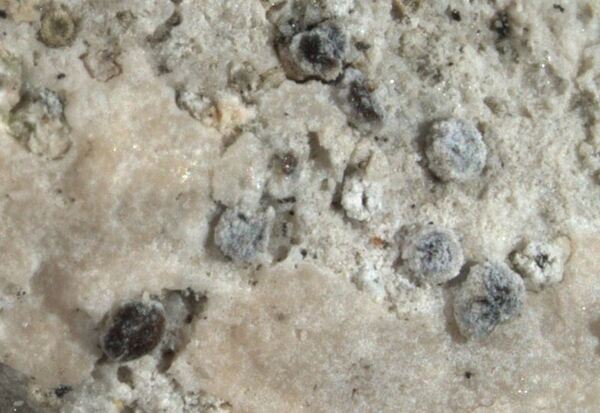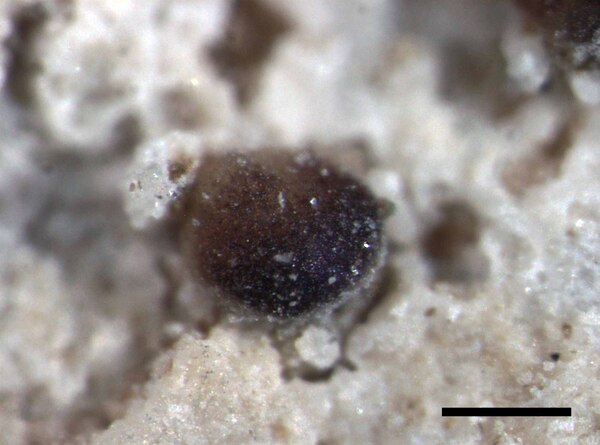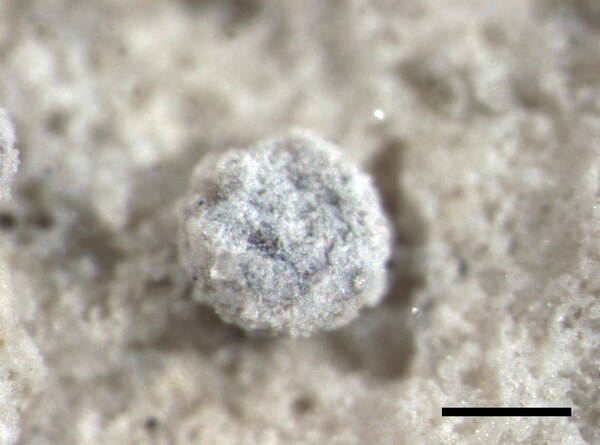Lecania sylvestris var. umbratica (Arnold) M. Mayrhofer
in Nimis & Poelt, Studia Geobot., 7, suppl. 1: 112, 1987. Basionym: Biatorina proteiformis f. umbratica Arnold - Flora, 57: 569, 1874.
Synonyms:
Distribution: N - Frl. C - Sar.
Description: Thallus crustose, endosubstratic or of scattered granules, white to yellowish white, poorly evident. Apothecia 0.3-0.4 mm across, usually sparse, rounded, with a reddish brown to dark brown, slightly convex disc, without an evident margin (with a few algal cells restricted to the lower edges of the apothecium). Thalline exciple absent or very poorly developed; proper exciple thin, poorly evident; epithecium yellowish brown to brown, the pigment rapidly extending to the upper part opf the hymenium; hymenium colourless or yellowish in upper part, 60-85 µm high; paraphyses few, hardly exceeding the number of asci, coherent, not or only slightly swollen at apex; hypothecium pale. Asci 8-spored, narrowly clavate, with a K/I+ blue tholus and a central non-amyloid area, Bacidia-type. Ascospores 1-septate, hyaline, ellipsoid, thin-walled, 11-16 x 4-7 µm, without a gelatinous perispore. Photobiont chlorococcoid. Spot tests: thallus K-, C-, KC-, P-, UV-. Chemistry: without lichen substances. Note: a mainly temperate lichen of calcareous rocks, probably more widespread in southern Europe.
Growth form: Crustose
Substrata: rocks
Photobiont: green algae other than Trentepohlia
Reproductive strategy: mainly sexual
Commonnes-rarity: (info)
Alpine belt: absent
Subalpine belt: absent
Oromediterranean belt: absent
Montane belt: very rare
Submediterranean belt: very rare
Padanian area: absent
Humid submediterranean belt: very rare
Humid mediterranean belt: very rare
Dry mediterranean belt: absent

Predictive model
Herbarium samples
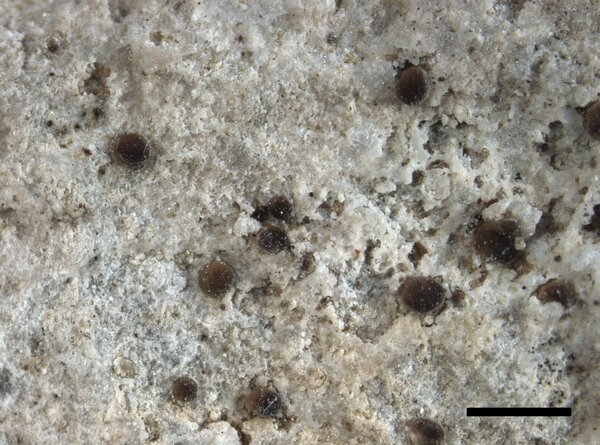

Elena Pittao; Owner: Department of Life Sciences, University of Trieste
Herbarium: TSB (16840)
15/02/2017
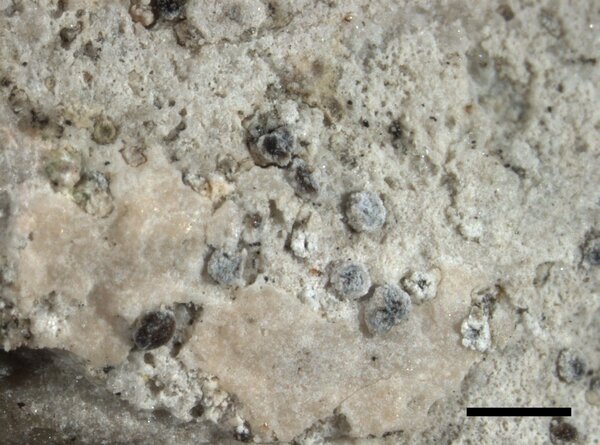

Elena Pittao; Owner: Department of Life Sciences, University of Trieste
Herbarium: TSB (16840)
15/02/2017
Growth form: Crustose
Substrata: rocks
Photobiont: green algae other than Trentepohlia
Reproductive strategy: mainly sexual
Commonnes-rarity: (info)
Alpine belt: absent
Subalpine belt: absent
Oromediterranean belt: absent
Montane belt: very rare
Submediterranean belt: very rare
Padanian area: absent
Humid submediterranean belt: very rare
Humid mediterranean belt: very rare
Dry mediterranean belt: absent

Predictive model
| Herbarium samples |


Elena Pittao; Owner: Department of Life Sciences, University of Trieste
Herbarium: TSB (16840)
15/02/2017


 INDEX FUNGORUM
INDEX FUNGORUM
 GBIF
GBIF
 DOLICHENS
DOLICHENS

